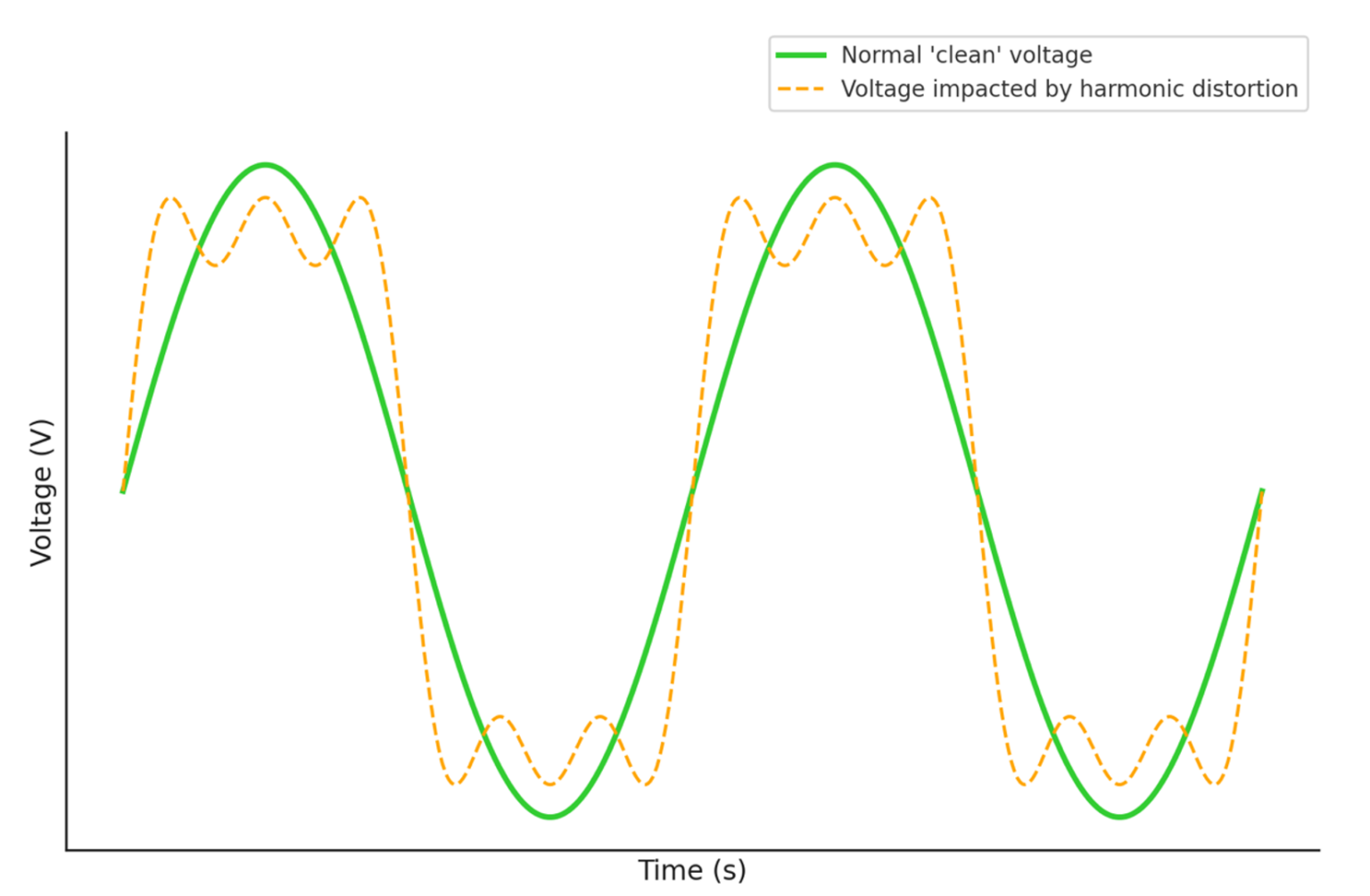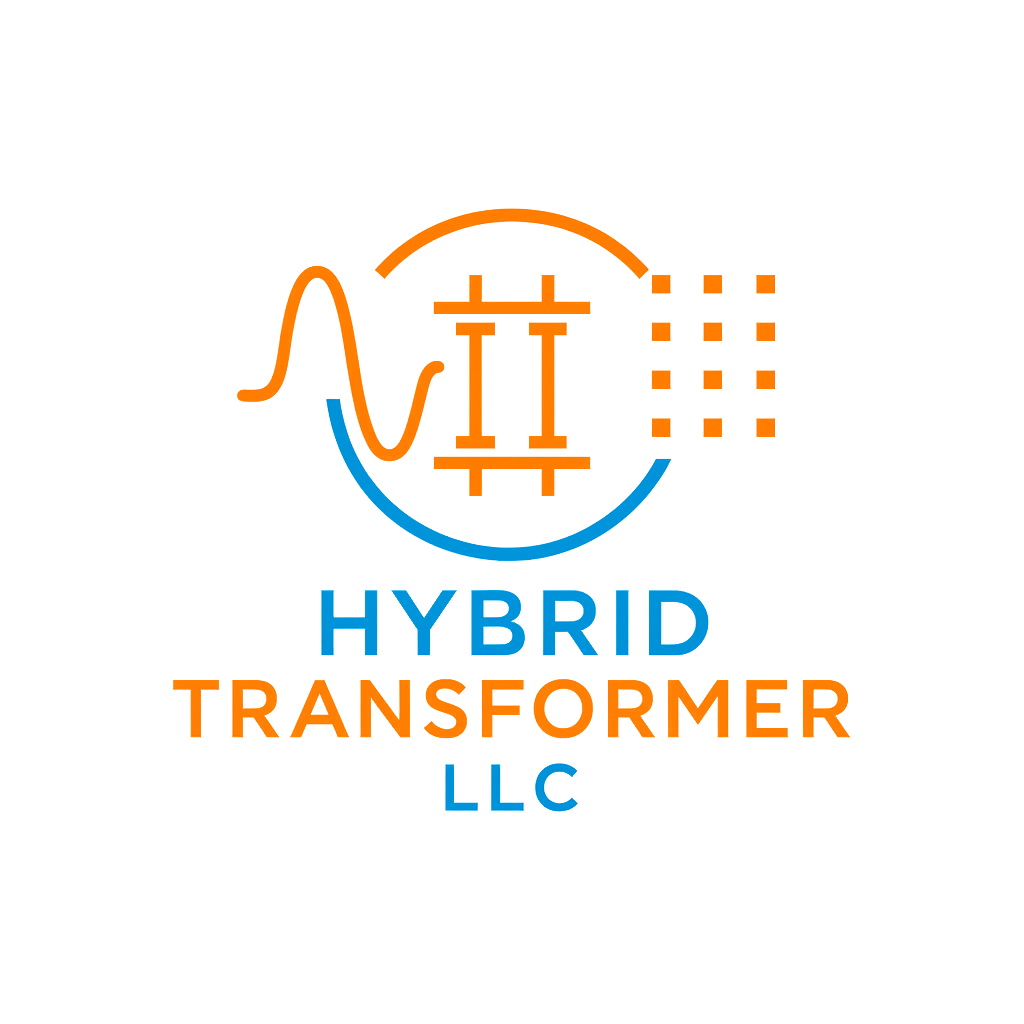The Silent Threat: How Harmonic Distortion Affects Transformers
Understanding Transformers and Harmonic Distortion
Transformers are fundamental components of the electrical grid, but they are not immune to issues like harmonic distortion. Harmonics, which are currents or voltages with frequencies that are integer multiples of the fundamental power frequency, can be introduced by various sources and have significant negative impacts on transformer performance and lifespan.

An illustration of a clean sine wave versus one with harmonic distortion.
Sources of Harmonics
Transformers themselves can introduce harmonics due to their nonlinear magnetizing characteristics and load fluctuations. Additionally, external factors and modern electronic loads contribute significantly:
- Non-linear Loads: Devices like computers, battery chargers, variable frequency drives (VFDs), and LED lighting draw non-sinusoidal currents, creating harmonic distortion.
- Grid Events: Tap-changed transformers, if not properly tuned, can become a source of voltage harmonics. Solar storms can also induce geomagnetic currents (GICs) that lead to extreme harmonic levels.
The Damaging Impact of High Total Harmonic Distortion (THD)
Total Harmonic Distortion (THD) is a measure of the total harmonic content in a signal. High THD levels are detrimental to transformers and other electrical equipment, leading to:
- Increased Losses: Higher iron and copper losses, reducing the transformer's efficiency.
- Reduced Capacity and Lifespan: The additional heat generated by harmonics shortens the life of the transformer and reduces its load-carrying capacity.
- Overheating and Failure: In severe cases, high THD can cause transformers to overheat and fail catastrophically.
The Ting Sensor Network: A Smart Grid Solution
Whisker Labs' Ting Sensor Network provides an unprecedented, high-resolution view of the power grid. With over a million sensors deployed across the U.S., the network offers granular insights into power quality, helping to identify and mitigate issues like harmonic distortion.

The Ting network provides wide-area monitoring of power quality.
How Ting Works
The Ting sensors are installed in homes and businesses and are designed to differentiate between local electrical issues and grid-wide phenomena. By correlating data from multiple sensors, the network can pinpoint the source of power quality problems with remarkable accuracy.
- Granular Data: The network monitors THD, voltage, and frequency at a local level, revealing hotspots that national-level monitoring would miss.
- Localized Insights: Data from the Ting network has shown that THD levels can vary significantly even within the same city, highlighting the need for localized monitoring and solutions.
Benefits for Power Companies and AI Data Centers
The real-time, distributed intelligence provided by the Ting Sensor Network offers significant advantages for both utility providers and consumers with sensitive electronic loads, such as AI data centers.
How Power Companies Benefit
- Enhanced Power Quality Management: Utilities can identify specific feeders or substations with high THD and take targeted action.
- Regulatory Compliance: The network helps utilities monitor and ensure compliance with standards like IEEE 519.
- Proactive Maintenance: By diagnosing the source of power quality issues, utilities can perform proactive maintenance and protect their infrastructure.
- Improved Resilience: Monitoring the grid's response to events like solar storms provides valuable data for future-proofing the grid.
How AI Centers and Other Sensitive Loads Benefit
AI data centers are massive consumers of power and rely on high-quality, stable electricity to protect their sensitive and expensive equipment.
- Protection of Equipment: Low THD is critical for the longevity and reliable performance of servers and other computing hardware.
- Operational Efficiency: Better power quality reduces energy waste, leading to lower operating costs.
- Reliability and Uptime: A stable power supply ensures continuous operation, preventing costly shutdowns and data loss.
In essence, the Ting Sensor Network acts as the nervous system of the modern electric grid, providing the diagnostics needed to maintain a healthy and reliable power supply for all, from individual homes to power-hungry AI centers.
